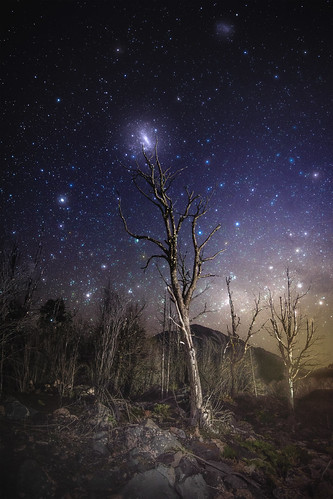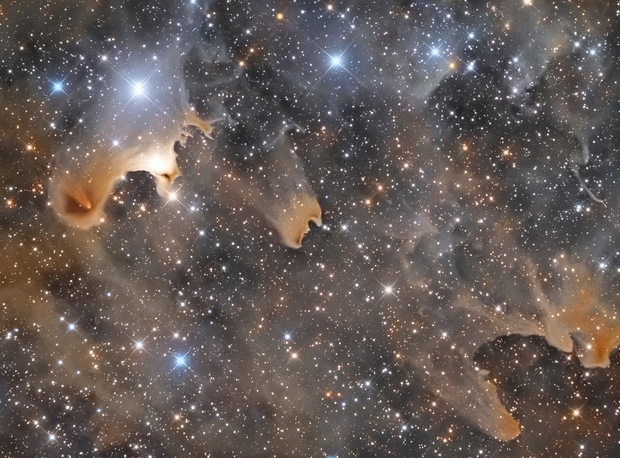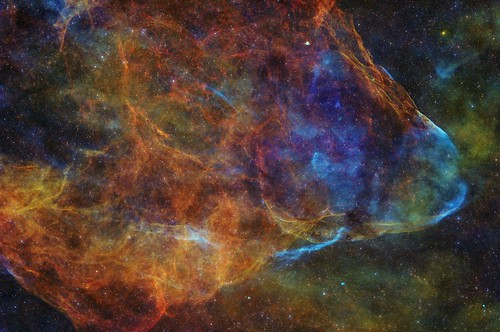Sh2-129/ OU4, The Flying Bat and Squid Nebula
This is it, the culmination of the entire summer's worth of imaging. My region did not get out from under the winter/spring permacloud until late May, then came thick wildfire smoke, which pretty much stuck around in varying thickness for the entire summer. Many of the nights that I imaged these objects were cut short by clouds, fog, or smoke, and MANY subs were tossed. What you see in the final image is the best I could get over 20 nights, and out of the those, perhaps only 3 of them were not spoiled by the environment or the moon. I knew this object pair was going to be tough, I just didn't realize HOW tough! If I'm one thing, it's that I am stubborn as a bull, so I stuck to my decision and just kept collecting photons for what felt like an eternity. I've never processed such a massive data set before, fortunately I recently built a PC that chugged through all the data in big gulps. I am pleasantly surprised how well all the data stacked up, especially on OU4. The effort was totally worth the work and the wait!
Full resolution JPEG:
https://astrob.in/azflsd/0/
Equipment
Imaging Telescope: William Optics SpaceCat 51
Imaging Cameras: ZWO ASI2600MM Pro
Mount: Astro-Physics Mach2 GTO
Filters:
Chroma Blue 31 mm · Chroma Green 31 mm · Chroma H-alpha 3nm Bandpass 31 mm · Chroma OIII 3nm Bandpass 31 mm · Chroma Red 31 mm
Software:
Open PHD Guiding Project PHD2 · Pleiades Astrophoto PixInsight · Russell Croman Astrophotography BlurXTerminator · Russell Croman Astrophotography NoiseXTerminator · Russell Croman Astrophotography StarXTerminator · Starkeeper Voyager
Acquisition details
Dates:
July 9, 2023 · July 10, 2023 · July 17, 2023 · July 18, 2023 · July 30, 2023 · Aug. 8, 2023 · Aug. 12, 2023 · Aug. 15, 2023 · Aug. 16, 2023 · Aug. 17, 2023 · Aug. 19, 2023 · Aug. 22, 2023 · Aug. 23, 2023 · Aug. 26, 2023 · Aug. 27, 2023 · Aug. 29, 2023 · Aug. 30, 2023 · Aug. 31, 2023 · Sept. 1, 2023 · Sept. 3, 2023
Frames:
Chroma Blue 31 mm: 60×180″(3h)
Chroma Green 31 mm: 60×180″(3h)
Chroma H-alpha 3nm Bandpass 31 mm: 297×300″(24h 45′)
Chroma OIII 3nm Bandpass 31 mm: 653×300″(54h 25′)
Chroma Red 31 mm: 60×180″(3h)
Integration: 88h 10′
Avg. Moon age: 13.83 days
Avg. Moon phase: 48.49%
Basic astrometry details:
Astrometry.net job: 8440953
RA center: 21h04m51s.8
DEC center: +60°39′46″
Pixel scale: 3.113 arcsec/pixel
Orientation: 91.643 degrees
Field radius: 3.212 degrees
Resolution: 6178x4126


















